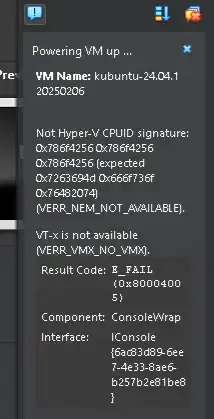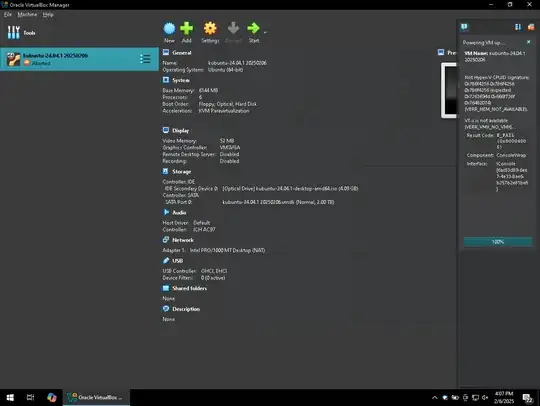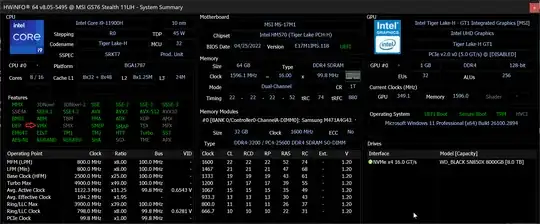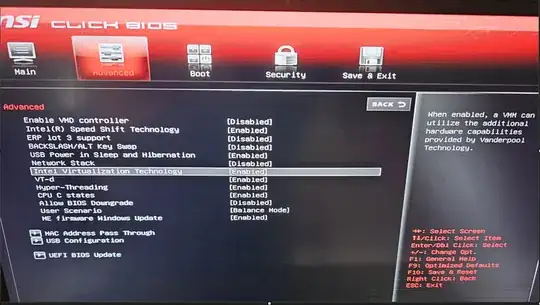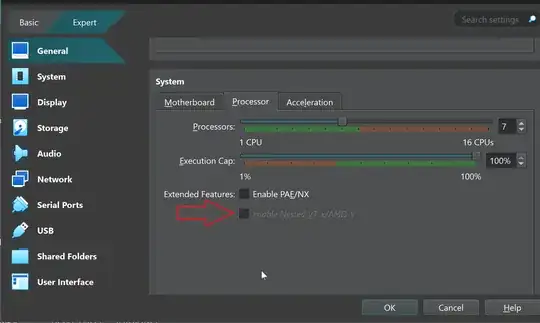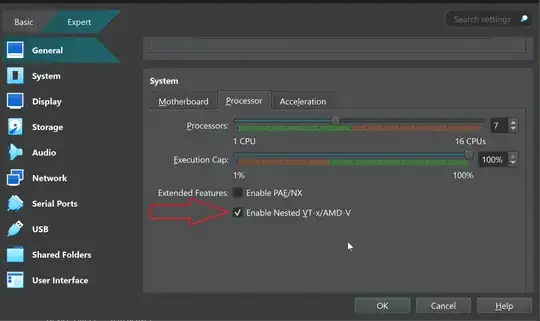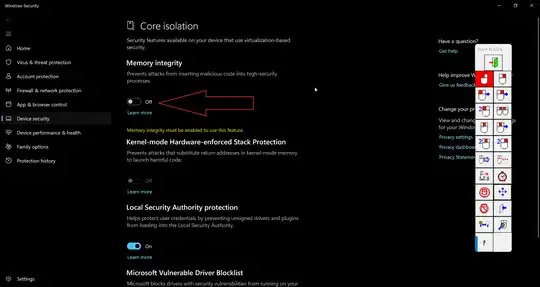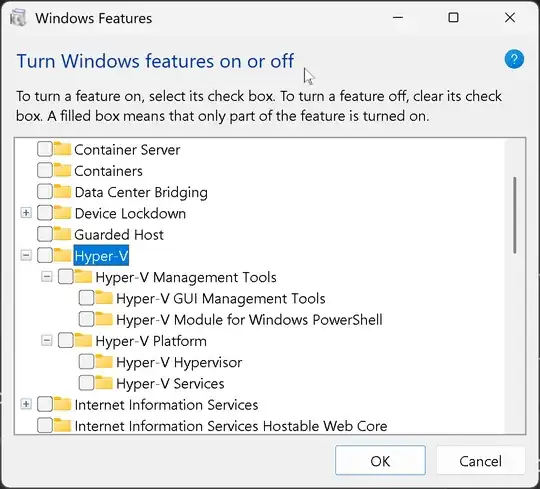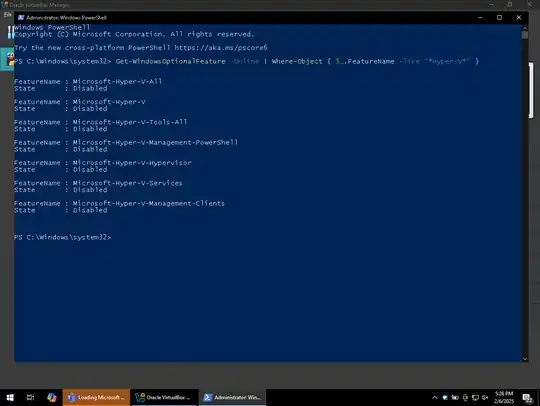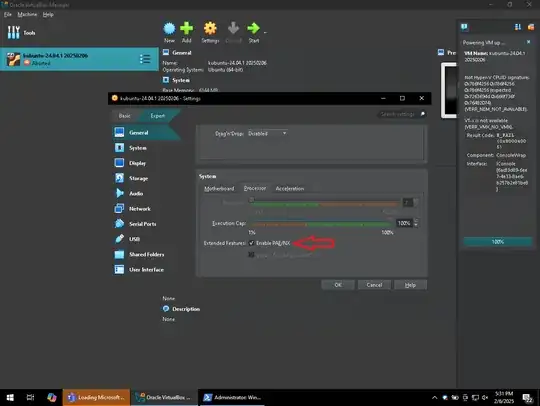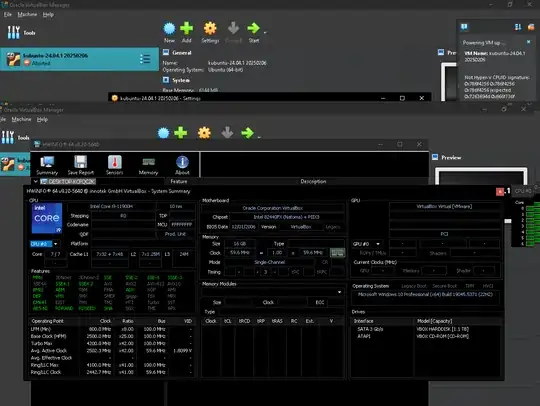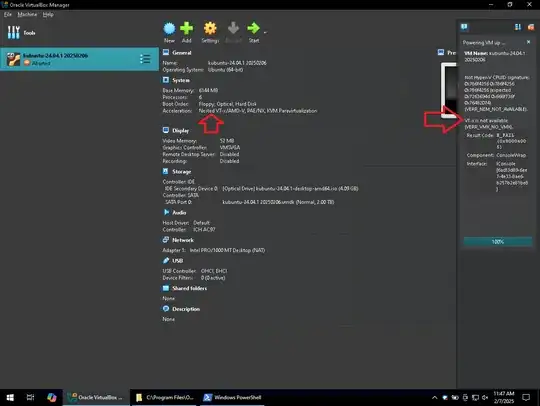Objective: Running Kubuntu inside Windows 10 inside Windows 11.
- Host runs Windows 11 24H2 Pro. It uses VirtualBox version 7.1.4 r165100 (Qt6.5.3).
- Guest runs Windows 10 21H2 Pro. It uses VirtualBox version 7.1.6 r167084 (Qt6.5.3).
- Guest's guest tries to run Kubuntu 24.04.1 LTS
Diagram in ASCII art:
Windows 11
VirtualBox > Windows 10
VirtualBox > Kubuntu
or in other words:
+------------+
| Windows 11 |
+------------+
│
▼
+------------+
| VirtualBox |
+------------+
│
▼
+------------+
| Windows 10 |
+------------+
│
▼
+------------+
| VirtualBox |
+------------+
│
▼
+------------+
| Kubuntu |
+------------+
I use a MSI GS76 Stealth 11UH laptop, which has an Intel Core i9-11900H CPU.
Problem: the VM in Windows 10 21H2 Pro hosting Kubuntu won't start. Error message:
VT-x is not available
Full-screen screenshot:
What I've tried and diagnosed:
My CPU (Intel Core i9-11900H CPU) supports nested virtualization, since HWiNFO shows the VMX flag is green:
Intel Virtualization Technology is enabled in the BIOS:
On Windows 11, in VirtualBox, Nested VT was disabled and grayed out:
So I turned it on with:
cd "C:\Program Files\Oracle\VirtualBox"
.\VBoxManage modifyvm "replace-with-actual-vm-name" --nested-hw-virt on
which worked to enable Nested VT in VirtualBox (and it's not grayed out anymore):
But Kubuntu doesn't start:
I've turned off the memory integrity on Windows 11 but that doesn't help:
What did I miss? Why isn't nested virtualization isn't not working? I.e., why isn't Kubuntu running fine on Windows 10 (which in turns is already running fine withing Windows 11)?
Hyper-V is disabled on Windows 11, which is good since one can't run VirtualBox or VMware with Hyper-V enabled on Windows 10 or 11:
Hyper-V is disabled on Windows 10:
Command used (to be run as admin in PowerShell):
Get-WindowsOptionalFeature -Online | Where-Object { $_.FeatureName -like "*Hyper-V*" }
Interestingly, Windows 10 says:
Hyper-V cannot be installed: The processor does not have virtualization capabilities.
which seems to indicate that nested virtualization is not turned on.
I enabled NX in VirtualBox in both Windows 11 and Windows 10 but still have the "VT-x is not available" error:
Windows 11:
Windows 10:
HWiNFO on Windows 10:
Trying to run VMware Player 17.5.0 in Windows 10 yields a similar error:
Trying to run VMware Workstation Pro 17.6.2 build-24409262 in Windows 10 yields a similar error:
Turning on nested virtualization on the VirtualBox in Windows 10 yields the same error message (nested virtualization is already turned on the VirtualBox in Windows 11, as mentioned earlier):
